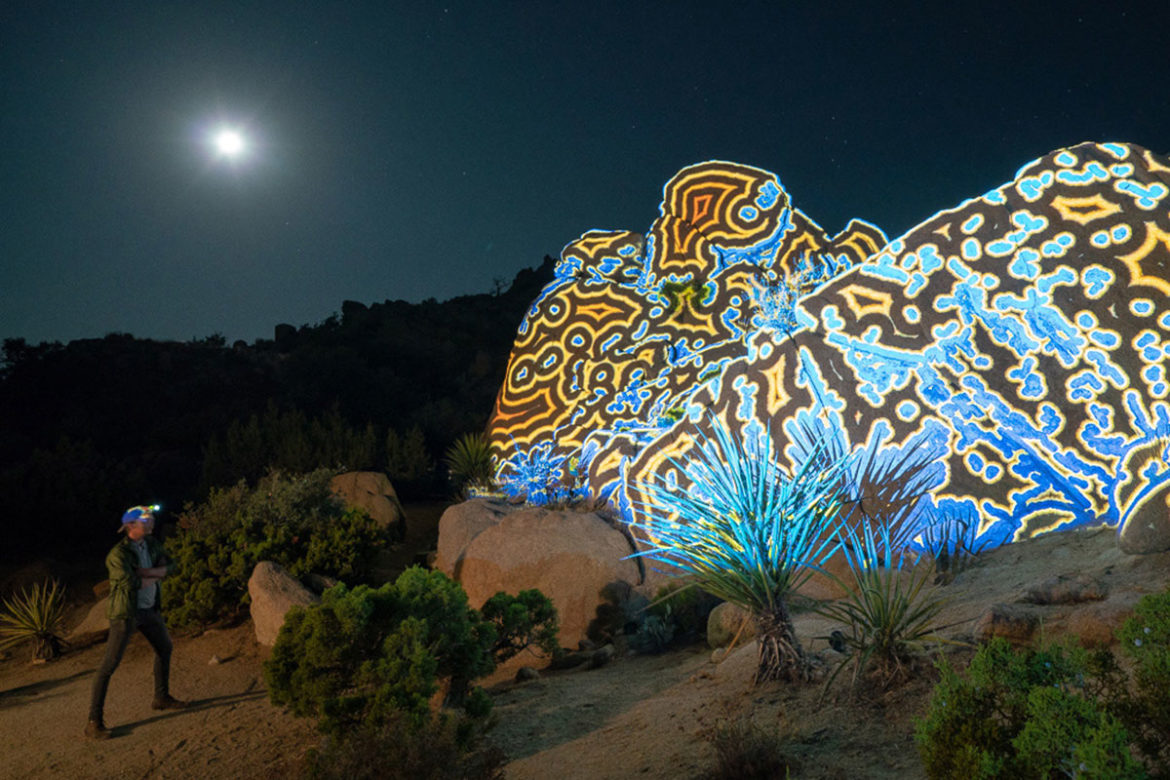Editors Note: One of the more eye-catching sequences created by the Lightform team that we’ve shared in our social posts and advertising was created thanks to the technical know-how and hard work of Sean Servis, Lightform’s production engineer. In addition to his vast technical knowledge, Sean is also a great storyteller. With that in mind, we thought his experience creating this video near Joshua Tree was too good to keep to ourselves, and we asked him to share what went into creating this projection.
As we were planning our launch video to announce the introduction of Lightform’s latest devices, we knew that we wanted to project onto something big with the LFC. We’ve seen our fair share of buildings mapped before, so we decided to bring our new hardware into nature to see how Lightform Creator’s shader effects reacted to some organic textures. We talked about illuminating redwood forests, waterfalls, snowy pine trees, and ultimately decided to start with the iconic geology of the Southern California desert.
The gradual shifting of the tectonic plates has littered the landscape around Joshua Tree National Park with unique formations of Gneiss, a rock defined by its banded texture, which can be overshadowed by the equally singular Joshua Tree that grows in the area. Unworldly piles of boulders and smaller rocks are everywhere, walking among them feels a bit like what I would imagine an ant might experience traversing the raked furrows of a zen garden.
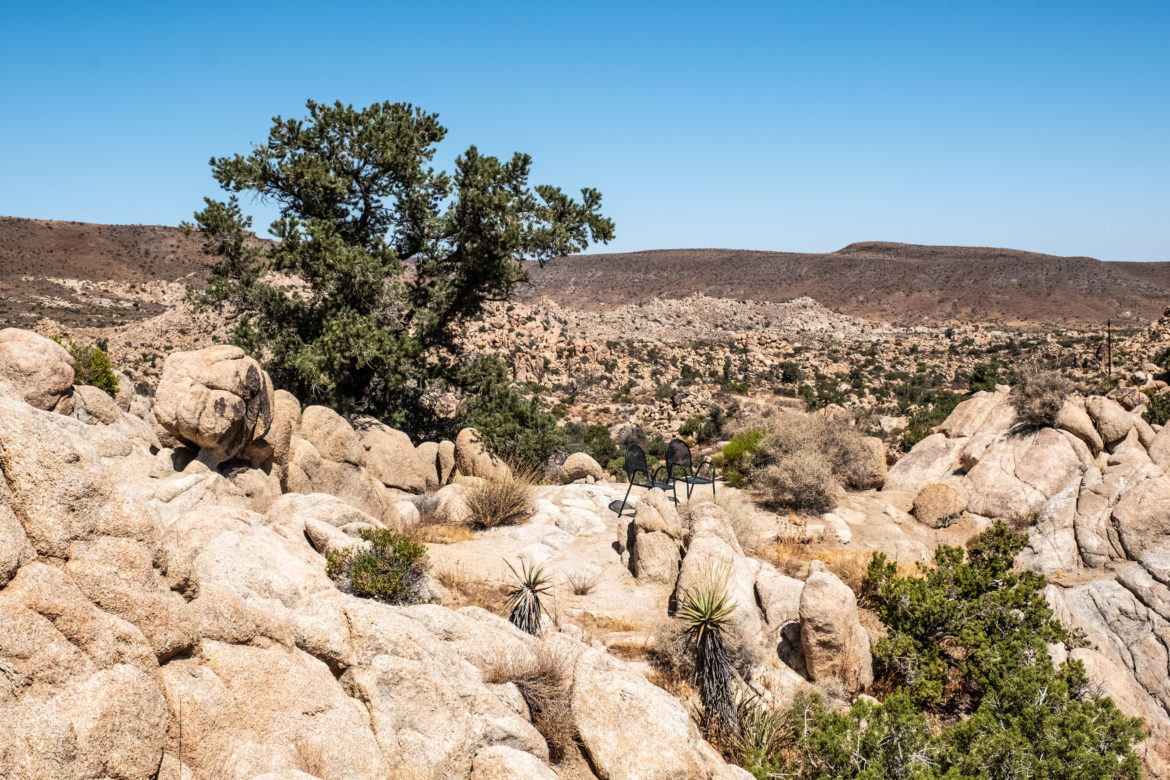
Yucca Valley, CA
We knew we wanted to get a lot of aerial shots to demonstrate the scale and depth of our projection, but since we couldn’t fly our drone in the National Park, we did some location scouting over the internet to find a rental property instead. Instagram posts tagged at different listings, google maps, and sun tracker apps helped us pick a place that we thought we work well, so in the second week of September, we packed up our brightest projector and as much video gear as we could carry and headed to the airport.
Unfortunately, the runways at SFO were under construction at the time and our small regional flight was delayed for hours. We had intended to start shooting that first evening but we didn’t arrive to the location until well after midnight. When we woke up to the bright desert sun a few hours later, we knew we had picked the right spot. We had unpacked our gear and started getting some shots of the setup process when we realized that we’d left the adhesive mounts for our LFC back at the office, so we got tricky with a little movie magic, the one and only gaffe tape.
Our 12k lumen Epson L1505u was no match for the daylight, but as the sun started to dip behind the rocks, we could see that our projector was not in the ideal place. With the sunset at 6:59 PM approaching, we had to move quickly to relocate to the porch of our rental house. We put our “beamer” on top of a picnic table, and when that wasn’t tall enough to clear the railings of the patio, we borrowed some of the heftier books from inside to get a few thousand pages more elevation.
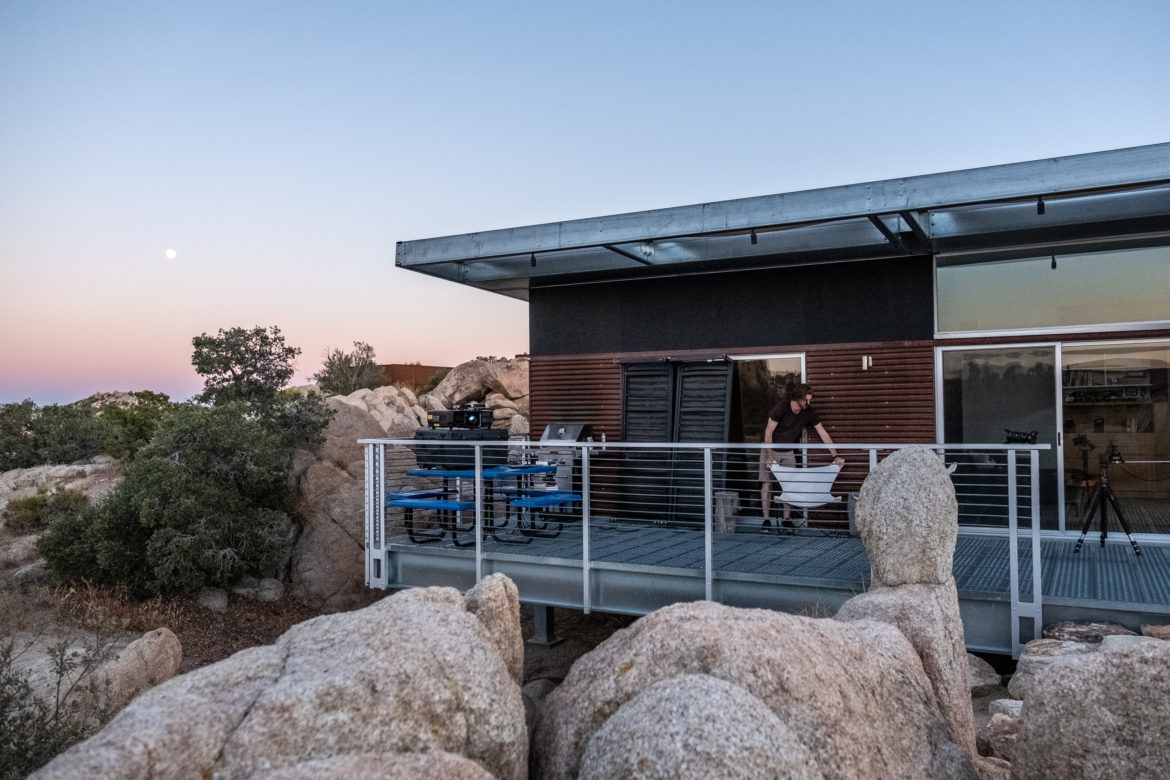
Moonrise Magic Hour
With magic hour beginning and the nearly-full moon rising, we started doing some tests, taking scans all the way through sunset and into dusk, creating a new project every time so we could save each result. We also brought along an LF1 with us so we could do some side-by-side comparisons, and were really pleased to see the improvements in quality that the LFC brought to the table. As the sky got darker, we set up an LED lighting panel to fill in the background where the house’s exterior lights were casting shadows or were too dim to show up on the LFC camera.
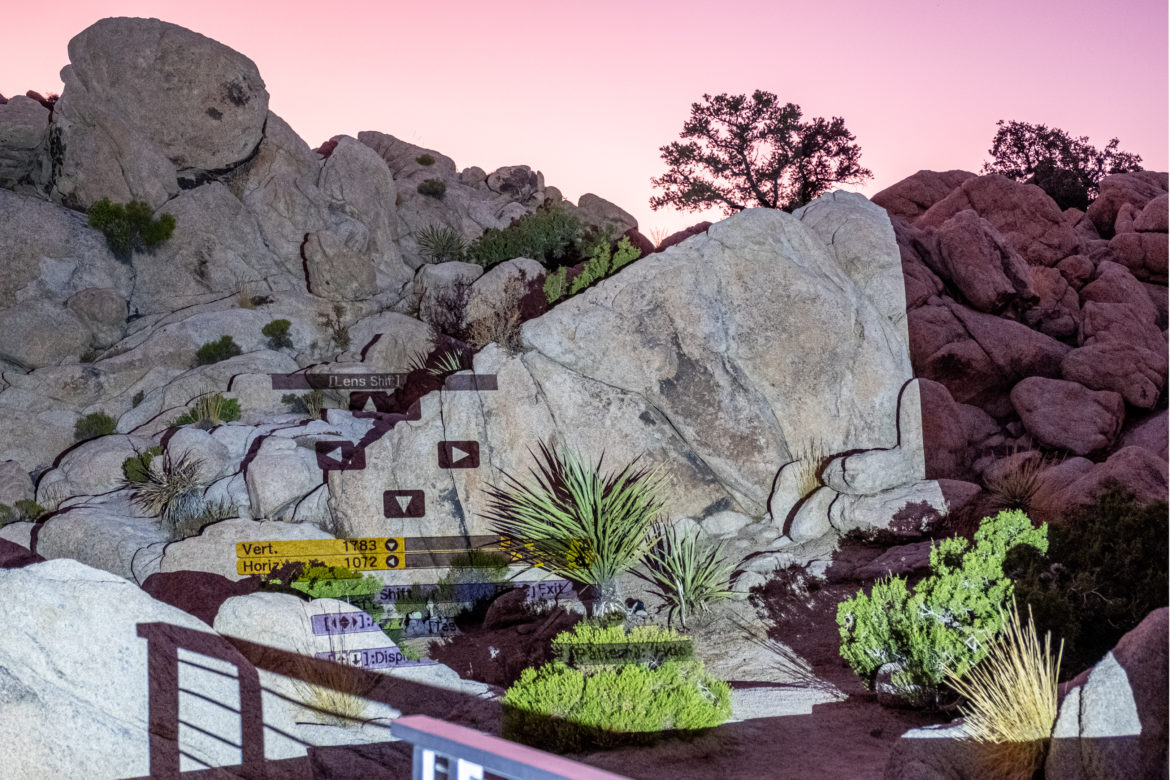
Adjusting the lens shift on the Epson L1505u.
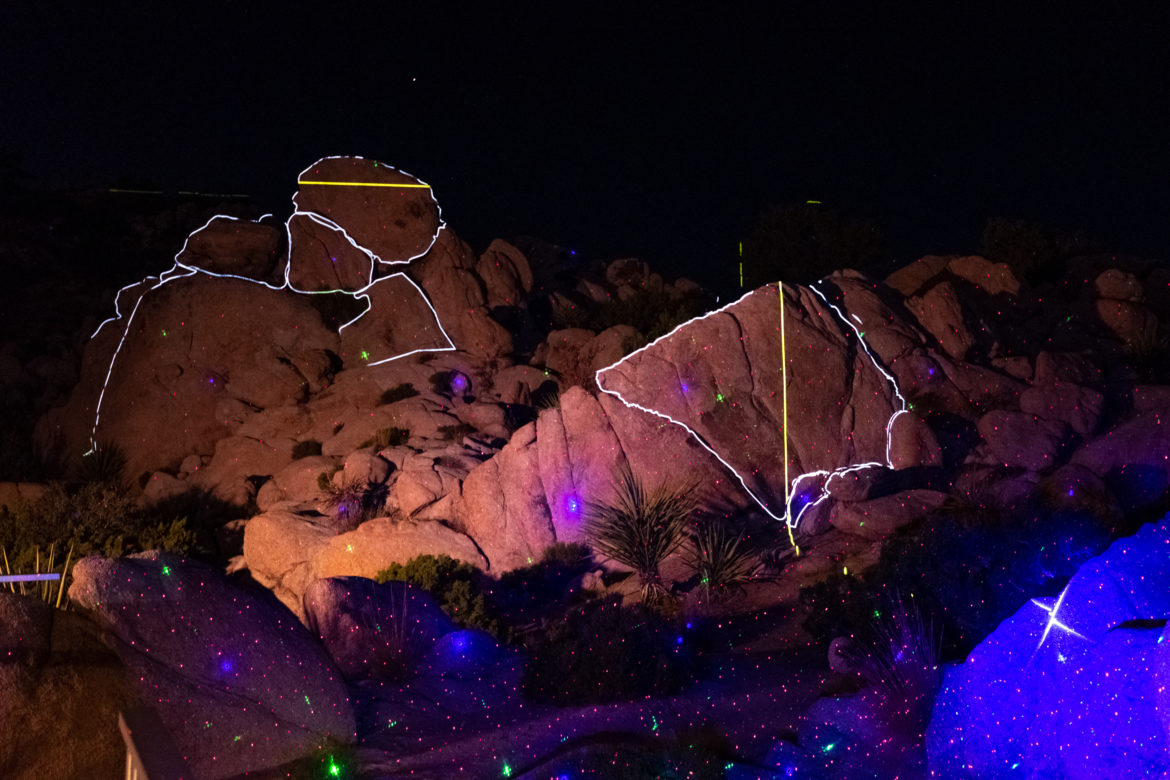
Checking boulder masks with the help of a laser party light.
Once the glow of the sun had disappeared completely we decided on a scan to use and started to build our project. We made one surface with all of the rocks and then picked a few of the larger boulders to add some accents. For the next hour or so we built a few slides using Lightform Creator’s effects to automatically pick out the textures and outlines. Ganzfeld and Pallette Trip’s bands of lights radiated through the volume of the landscape, blending Traffic Lights, and Chromatic together made it appear as though the tectonic plates were crashing into each other again. Adding the Ripple effect and turning all the values up to the max made it look like these enormously heavy rocks were wobbling like they were made out of rubber and I felt dizzy watching them.
For the rest of the night, we flew our drone over and around the rock projections, walked through them with our Sony a7, and climbed up them so our bodies and shadows might show a sense of the scale. With our projector about 20m from the closest boulder in our scene and more than twice as far from the furthest, our effects were covering more surface area by far than either of us had seen before. At around 3 am we brewed some coffee, got some last shots, and started to pack up our gear to make our return flight a few hours later.
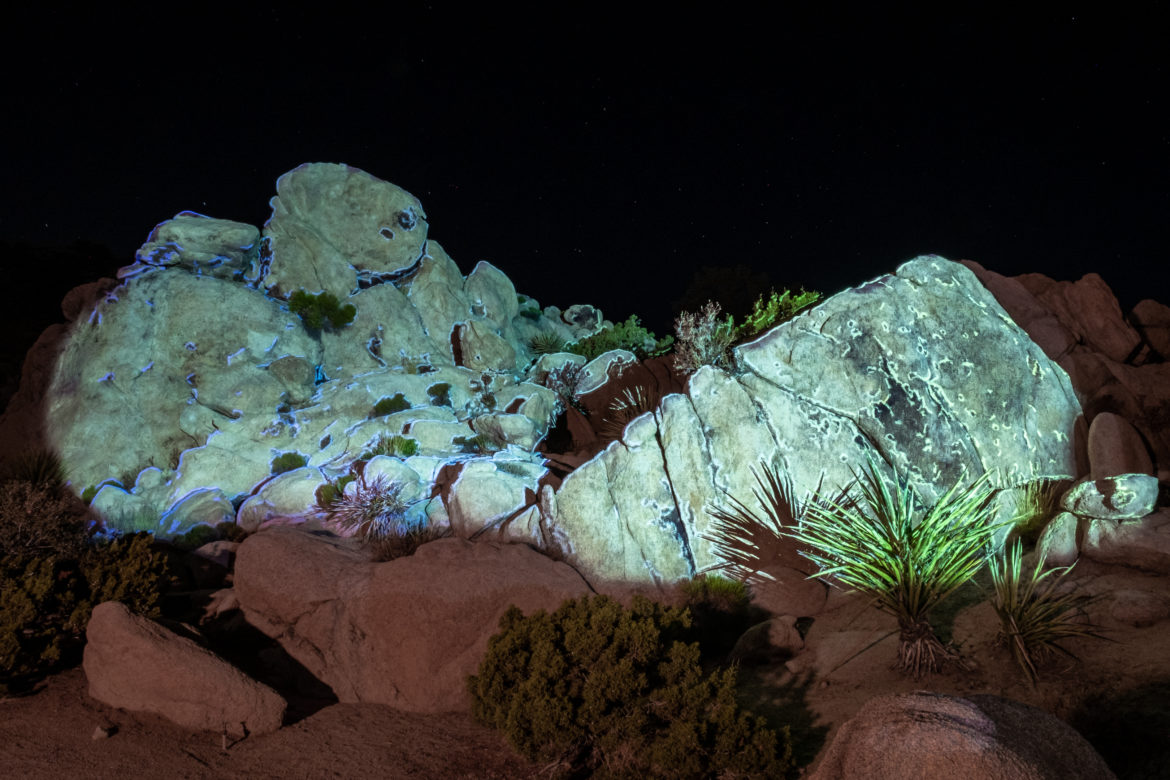
30 second exposure with stars
~ Sean Servis
Note:
As of August 12th, 2022, Lightform is no longer in business and is no longer providing technical support for the product. Please refer to the Lightform Guide and FAQ for self-help resources.
